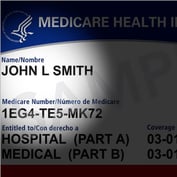Ebola is raising an unusual benefits question: Can the insurance plans consumers already have protect them against quarantine-related costs?
Or, from the insurers’ perspective: Is it possible that insurers could be on the hook for paying quarantine bills?
Ebola is just one of the conditions that could lead to aggressive disease control efforts this year. Other contenders include enterovirus D68, Middle East Respiratory Syndrome (MERS) and influenza. But Ebola is the disease that is now the most effective at capturing the public’s imagination. In August, for example, one user of Quora, a Web-based discussion site, asked, “If you are forcibly quarantined, is it covered by health insurance or do you get billed for it?”
Any U.S. major medical policy that covers hospitalization would pay for hospital care for Ebola or another serious infectious disease and most policies would cover some home health care for patients trapped at home.
But many health plans’ Web-based benefits summaries say nothing about whether the plans do or do not cover quarantine-related expenses.
Questions about the best way to respond to the outbreak of a dangerous infectious disease hit the insurance industry directly in 1918, when life insurance employees found themselves processing death claims for victims of the Spanish Influenza as their own colleagues were dying from the flu.
See also: III: Bad Flu Could Cost Life Insurers $133 Billion
The Patient Protection and Affordable Care Act (PPACA) did include some funding for efforts to improve public health programs, including pandemic preparedness efforts. In February 2011, for example, the U.S. Department of Health and Human Services (HHS) said California was getting $2.9 million in outbreak preparedness funding. PPACA does require a PPACA-compliant plan to include flu shots and other inoculations in the package of preventive services benefits that an enrollee is supposed to get without having to pay any out-of-pocket costs, but the focus of PPACA is mainly on encouraging people to eat better, exercise and handle minor conditions on their own — not to go to a doctor with stomach pain and a moderately high fever. The standard PPACA summary of benefits and coverage (SBC) does not say anything about quarantine situations. The standard scenarios an SBC includes to show an insured how a policy will work are the birth of a baby and managing diabetes. An SBC usually does not say anything about the benefits available for enrollees who have an infectious disease.
Here’s a look at some of the information we found when we looked at how insurers, benefit plan sponsors and others have dealt with the topic of quarantines.

1. Some health insurers have talked about quarantines in discussions of efforts to prepare for flu epidemics.
Aetna Inc. (NYSE:AET) mentions the possibility of a quarantine in an answer to a question about how the company would maintain its data centers if a pandemic significantly affected its employees.
Aetna said it could run the data centers even with a 70 percent absence rate, has implemented stringent infection-control procedures in the data centers and has developed self-sufficiency procedures to keep the centers running if the government imposes a quarantine.

2. Sellers of trip cancellation insurance are good about spelling out how they’ll handle quarantines.
The issuer of the Sportsman’s Travel Insurance Plans, which is written by a unit of American International Group Inc. (NYSE:AIG), states clearly that it will pay benefits if an insured suffers a travel interruption due to a quarantine.








 October 07, 2014 at 03:00 AM
October 07, 2014 at 03:00 AM














